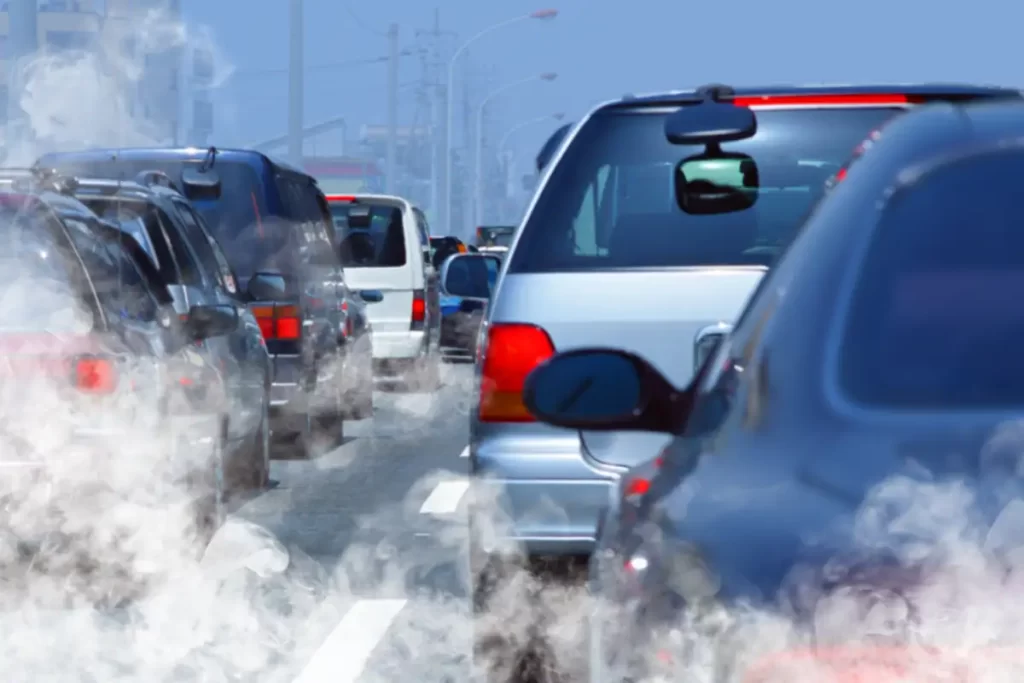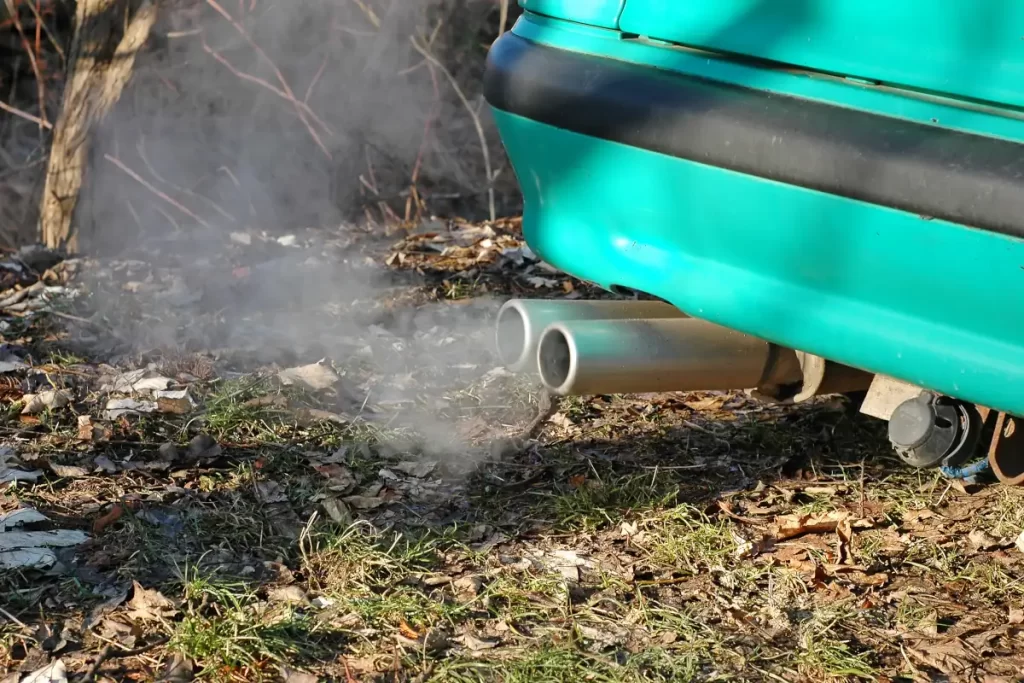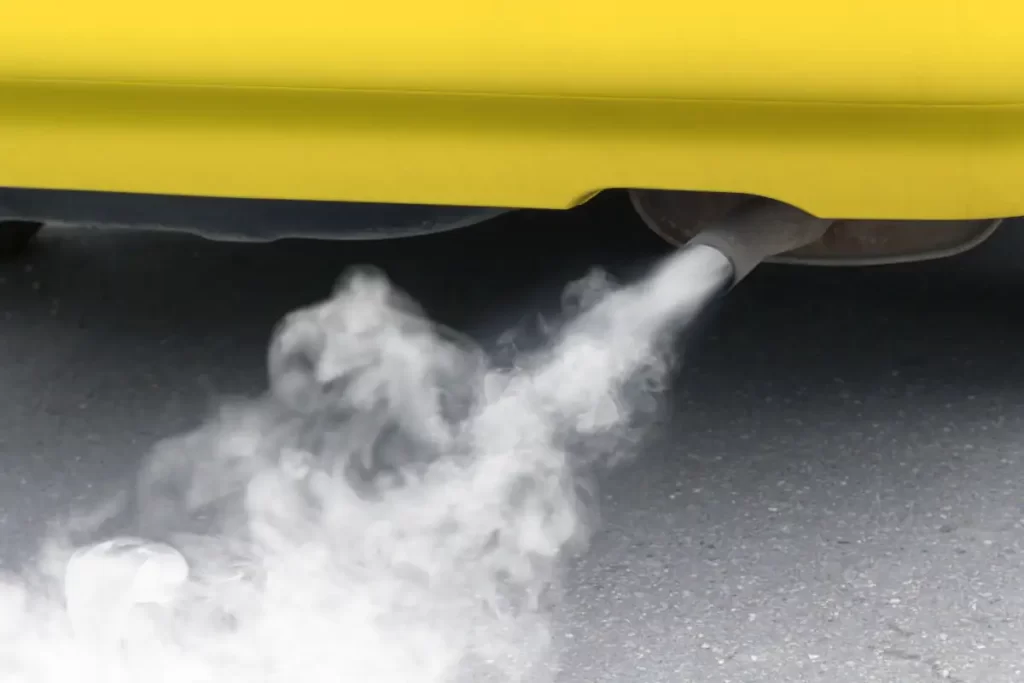We see hot fumes coming out of a car, sometimes they are of different types, but have you wondered where they eventually go?
Do car exhaust fumes rise or fall? What should they normally do?
Let’s find out more in this article.
Here’s What Happens With Car Exhaust Fumes When They Are Emitted
The hot fumes that leave an exhaust rise when they exit the vehicle. Carbon monoxide, a molecule that has the same density as air, is the main component in exhaust fumes. It is impossible for exhaust fumes to rise or fall once they have cooled to the same temperature as the surrounding air.

Combustion produces a variety of gasses that contribute to exhaust fumes. There are several of these gasses in our atmosphere that is naturally occurring. Exhaust from your car’s tailpipe is primarily composed of nitrogen, oxygen, carbon dioxide, and water vapor, which are common in nature.
Although exhaust fumes contain elements that are extremely harmful to the human body, they are also contained in high concentrations in exhaust.
Many pollutants can be dangerous when inhaled, including carbon monoxide, hydrocarbons, and particulates.
In small spaces like your car’s cabin, exhaust fumes can accumulate to dangerous levels. A car exhaust contains a significant amount of carbon monoxide, which is a very dangerous gas. In its natural state, it does not smell, taste, or appear in any way.
As soon as it enters the body, it combines with hemoglobin, restricting oxygen supply to the body and leading to unconsciousness, shortness of breath, and even death.
Related:
- Can Car Exhaust Kill Grass, Plants, and Insects? (Might Surprise You)
- Is Open Exhaust Bad For The Engine? (5 Watchouts)
- What Metal Are Vehicle Exhaust Pipes Made Of? (Answered)
Is It Better If The Car Exhaust Fumes Rise Or Fall?

It is dangerous to inhale exhaust fumes, regardless of whether they rise or fall. During engine operation, vehicles emit different gasses and particles as exhaust emissions.
In big cities with congested traffic, these emissions can contribute to poor air quality.
Several factors contribute to global warming, including exhaust fumes and other particulates released into the atmosphere.
Oxygen, nitrogen, water, and other harmless chemicals are included in emissions, but so are more dangerous ones. Although we’re all familiar with CO2, our cars emit other chemicals that can damage our environment.
Once Car Exhaust Fumes Are Emitted, Where Do They Go?
Whenever exhaust fumes are released into the atmosphere, they rise upward. Pollutants from cars impact the environment both immediately and over time.
Global warming, acid rain, and human health are all affected by car exhaust, which emits a wide range of gasses and solid matter. Pollution also results from engine noise and fuel spills.
Air pollution in the United States is primarily caused by cars, trucks, and other forms of transportation. However, car owners can reduce the environmental impact of their vehicles. Global warming is largely caused by car pollution.
The United States emits one-fifth of global warming pollution from cars and trucks due to their emissions of carbon dioxide and other greenhouse gasses.
Temperatures around the world are rising because of greenhouse gases trapped in the atmosphere.
Are Car Exhaust Fumes Visible, And What Color Should They Be?

As a driver as well as a mechanic, color plays a significant role in the maintenance of your vehicle. Driving means following the green light, going slow or being cautious when it’s yellow, and stopping when it’s red.
A recent blog discussed how dashboard lights are usually color-coded so that you can determine the importance of each. There are several reasons why exhaust colors might change.
White
During the condensation process of the exhaust, a white vapor is released. There is usually nothing to worry about when there is thin white exhaust smoke.
When the weather gets cold, white vapor-like smoke can be seen from the exhaust of some cars. Usually, the thin smoke should disappear once the engine warms up. Cars typically release thin white smoke, but issues arise when the smoke is consistently thick and white.
Smoke from your car’s engine typically indicates faulty engine coolant.
It is at this point that coolant enters the combustion chamber.
In addition to cracked engine blocks and damaged cylinder heads, this can lead to other problems as well. You might also be suffering from a broken cylinder head if your car emits thick white clouds of smoke. Your vehicle may overheat as a result.
Additionally, a blown head gasket can cause cars to emit this type of smoke. During start-up, gasoline engines can get hot enough to blow out their combustion chambers.
You should be careful if your vehicle starts showing this condition since if you’re not careful, you might find yourself stranded.
Blue
The first time your engine starts up in the morning, blue smoke usually appears. When your engine burns oil, you will see blue exhaust smoke. In older cars, oil burning is mostly a problem caused by unresolved maintenance issues.
Having too much or too little oil could be the cause of your blue exhaust smoke. There are many places in your car where you do not want oil, such as the combustion chamber.
If there is too much oil, it gets into the combustion chamber. It can also get into your combustion chamber if there isn’t enough oil. Too little oil can become overheated and viscous.
Check your dipstick first to see if this is causing your blue smoke. The excess will need to be drained and disposed of if it’s above the “full” line. If it is not to the line, more oil should be added.
The oil level could be correct, but your car could still be burning oil if you continue to see blue exhaust smoke after adjusting the oil level. From a leaking head gasket to a broken piston ring, oil burning can be caused by anything.
The glow plug in your diesel vehicle may be faulty if you drive one. These are all issues that should be addressed as soon as possible. Compounding problems can occur if you don’t resolve them. It is possible for a car to blow its motor if it burns oil, as it may foul its spark plugs and overheat its catalytic converter.
Getting your vehicle to a mechanic right away can prevent what could be an expensive PCV valve repair from becoming a motor replacement.
Black
A vehicle’s exhaust can appear black when it burns too much fuel. There are several possible causes of a blocked exhaust manifold, including a clogged air filter, a malfunctioning fuel injection system, or an inoperative fuel injection system.
Clogged air filters won’t damage your fuel economy, but they will compromise performance. Make sure your vehicle is getting more fuel than normal by having a technician check it out.
Invisible
Similarly, some more serious problems with your exhaust can remain invisible even if you have visibly different colors in your exhaust. When this happens, the best way to detect the problem is with your ears:
Loud noises coming from a standard exhaust can indicate a leak somewhere in the system. The issue must be addressed as soon as possible. It’s also possible that rattling sounds are a sign that your exhaust system is failing to attach firmly to the car’s belly.
Reattaching the clamps or tightening a few screws can often fix the latter problem.
Detecting a hissing noise can be more challenging. Rust and cracks along the seams of pipes, caused by excessive wear and tear, can cause this very particular sound. You should definitely take the car to a mechanic in order to identify the exact source of the problem.
Final Thoughts
Exhaust fumes are usually hot when they are emitted from the vehicle, so they naturally rise. The chemicals and carbon monoxide in the fumes linger in the environment and eventually make their way to the atmosphere. Exhaust fumes are harmful to the ozone and can also be dangerous for anyone who breathes them.
Sources:
Black Smoke From Exhaust (Causes & How To Fix It) (mechanicbase.com)



